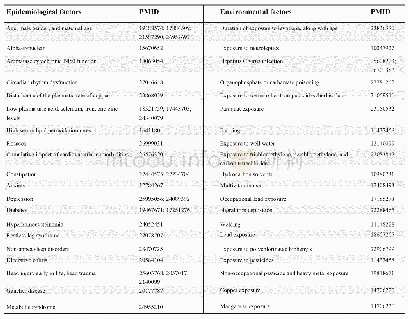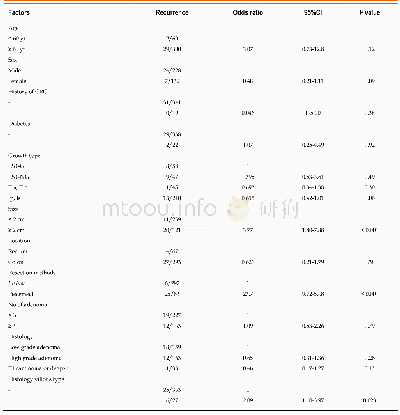《Table 1 Risk factors and odds ratios for various outcomes according to 11 studies[7, 8, 20-28]》
![《Table 1 Risk factors and odds ratios for various outcomes according to 11 studies[7, 8, 20-28]》](http://bookimg.mtoou.info/tubiao/gif/ZXXY201901004_37400.gif) 提示:宽带有限、当前游客访问压缩模式
提示:宽带有限、当前游客访问压缩模式
本系列图表出处文件名:随高清版一同展现
《Initial management for acute lower gastrointestinal bleeding》
1Age>60 years;2Age>70 years;3Either surgery,intensive care unit admission,or mortality;4Either rebleeding,surgery,or mortality;5Interventional radiology or surgery;6The variables were identified as risk factors,but odds ratios of these were not descri
Physicians must understand the predictive factors for severe LGIB to improve triage of appropriate patients for emergency hospitalization or early intervention.Several studies have investigated risk factors for adverse outcomes(rebleeding,severe bleeding,need for emergent hospitalization,need for intervention,adverse events,or death)in patients with acute LGIB[7,8,20-28].These include older age,presenting symptoms(no abdominal tenderness,no diarrhea,altered mental status,or blood on rectal examination),vital signs,comorbidities,medication use[nonsteroidal antiinflammatory drugs(NSAIDs)and antithrombotic agents],and laboratory data[hemoglobin(Hb),hematocrit,albumin,BUN,Cr,and prothrombin time(PT)](Table1).We also previously reported a predictive model of severe LGIB(NOBLADS score),which included NSAID use,no diarrhea,no abdominal tenderness,systolic blood pressure≤100 mmHg,albumin level<3.0 g/dL non-aspirin antiplatelet drug use,Charlson comorbidity index score≥2,and syncope[24].Several predictive models have been validated in other settings(Table 2)[21,22,24,27,28].Applying these models to manage LGIB could improve clinical outcomes and resource utilization.However,compared with established models of severe UGIB[29,30]such as the Blatchford score,predictive models of severe LGIB require further validation and improvements in accuracy.
| 图表编号 | XD0049328400 严禁用于非法目的 |
|---|---|
| 绘制时间 | 2019.01.07 |
| 作者 | Tomonori Aoki、Yoshihiro Hirata、Atsuo Yamada、Kazuhiko Koike |
| 绘制单位 | Department of Gastroenterology, Graduate School of Medicine, the University of Tokyo、Division of Advanced Genome Medicine, the Institute of Medical Science,the University of Tokyo、Department of Gastroenterology, Graduate School of Medicine, the University |
| 更多格式 | 高清、无水印(增值服务) |





